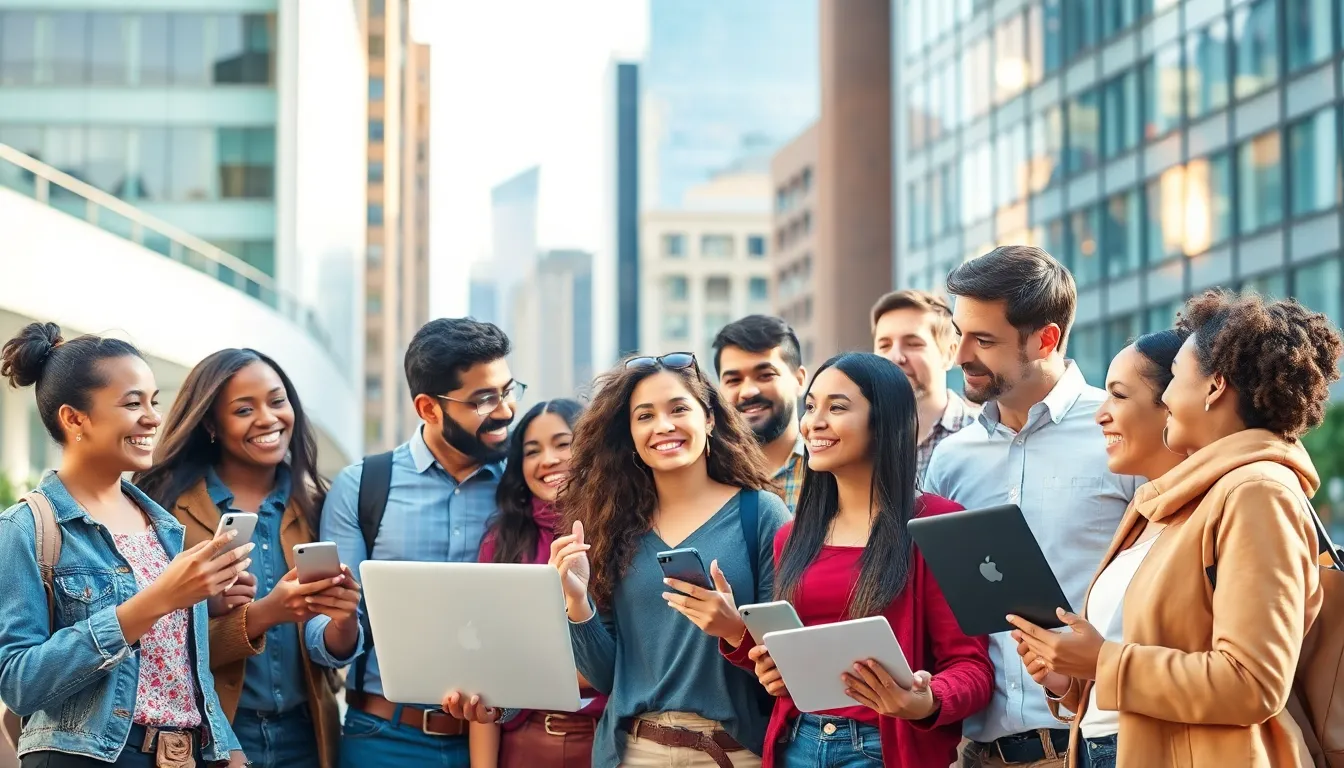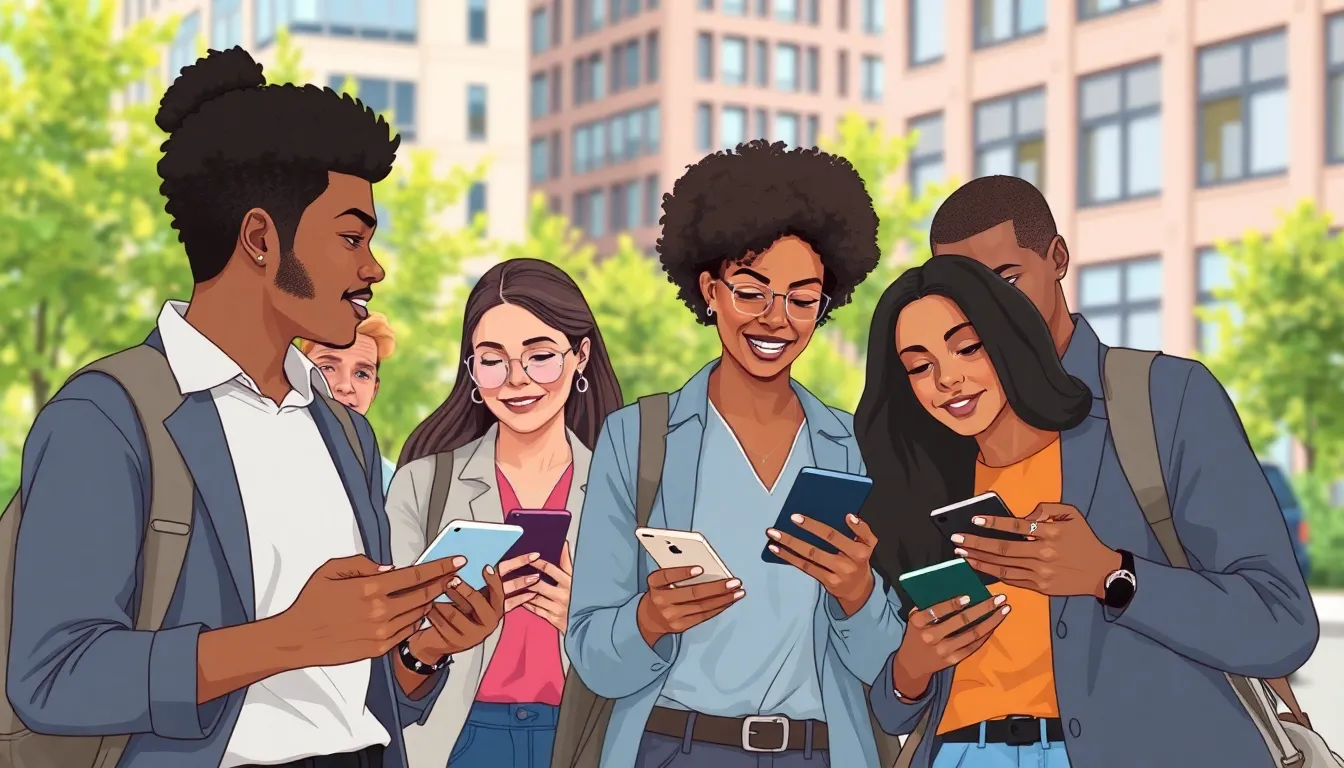In a world where trends come and go faster than a cat video goes viral, understanding sociocultural trends is more crucial than ever. These trends shape how people think, behave, and interact, influencing everything from fashion choices to political opinions. It’s like trying to keep up with your favorite celebrity’s latest hairstyle—if you blink, you might miss the next big thing!
sociocultural trends
Sociocultural trends refer to the shifts in societal behaviors, values, and cultural norms. These trends emerge from a combination of social influence, cultural dynamics, and individual choices.
Definition of Sociocultural Trends
Sociocultural trends encompass changes affecting community behaviors, beliefs, and values. They arise from interactions in various environments, such as workplaces, schools, and online platforms. For instance, the rise of social media has significantly altered how people communicate and engage with one another. Additionally, these trends reflect the evolving attitudes toward diversity, technology, and sustainability. Observing these shifts helps identify the driving forces behind societal change and cultural evolution.
Importance of Sociocultural Trends
Understanding sociocultural trends is crucial for adapting to societal shifts. Businesses benefit by aligning their strategies with current consumer behaviors, enhancing customer engagement. Moreover, policymakers gain insights into the populations they serve, allowing for better-targeted initiatives. Sociocultural trends influence various sectors including fashion, technology, and entertainment, shaping modern interactions. Recognizing these patterns aids in predicting future developments and securing competitive advantages in constantly changing environments.
Key Factors Influencing Sociocultural Trends


Multiple factors contribute to the evolution of sociocultural trends. Each factor plays a significant role in shaping societal norms and behaviors.
Economic Factors
Economic stability affects consumer spending behaviors. Rising disposable incomes may lead to increased spending on luxury goods and services. Conversely, economic downturns prompt changes in purchasing priorities, emphasizing value and necessity. Job market fluctuations also influence lifestyle choices. On a broader scale, globalization alters local economies, introducing diverse cultural influences that impact community values and behaviors.
Technological Advances
Technology transforms communication and accessibility. Social media platforms rapidly disseminate trends, allowing new ideas to spread quickly. Streaming services alter entertainment consumption patterns, shifting preferences toward on-demand content. Mobile devices facilitate access to information, changing how individuals engage with news and culture. Innovations in technology also influence education and work environments, creating new cultural dynamics that shape societal interactions and expectations.
Cultural Shifts
Cultural shifts occur through changing attitudes toward identity, diversity, and inclusion. Increased awareness and acceptance of various identities foster more open dialogues about societal issues. Movements for social justice drive changes in consumer behaviors and corporate responsibilities. Environmental consciousness leads to lifestyle changes, with more individuals prioritizing sustainability in their choices. These cultural shifts influence everything from marketing strategies to public policy, reflecting evolving societal values and behaviors.
Impact of Sociocultural Trends on Society
Sociocultural trends significantly shape various aspects of society. These shifts influence how people communicate and adopt new lifestyles.
Changes in Communication
Social media platforms dominate modern communication styles. Users engage with each other through instant messaging, videos, and real-time updates. As a result, traditional communication methods like phone calls and face-to-face interactions decline. Information spreads rapidly, impacting public opinion and discourse. Online conversations often shift toward informal language and emotive expressions. These changes enhance connectivity for some but also challenge the depth of interpersonal relationships. Businesses respond by adapting marketing strategies to utilize platforms effectively. They focus on real-time engagement to attract consumer attention.
Evolving Lifestyle Choices
Consumer preferences reflect changing values and priorities. Increasing health awareness drives demand for organic and sustainable products. People seek choices that align with their lifestyle, promoting wellness and sustainability. Additionally, experiences over material possessions gain popularity, with many opting for travel and activities instead of products. Flexibility in work arrangements, such as remote jobs, influences individuals’ daily routines. Technology facilitates these lifestyle adjustments, allowing for a better work-life balance. Ultimately, these evolving choices showcase a shift towards a more conscious consumer culture that values authenticity and personal fulfillment.
Current Sociocultural Trends to Watch
Sociocultural trends reveal a rapid evolution in societal values and behaviors. Tracking these shifts offers insights into consumer preferences and societal norms.
Gender and Identity
In recent years, understanding gender and identity has taken center stage. Conversations around gender fluidity and non-binary identities are growing, reflecting a more inclusive society. This shift influences fashion industries that now prioritize unisex clothing lines, catering to diverse gender expressions. Media representation plays a crucial role, with more portrayals of varied identities helping shape public perceptions. Brands that embrace these changes often find resonance within their target audiences, strengthening loyalty.
Environmental Awareness
Environmental awareness remains a significant trend. Consumers increasingly prioritize sustainability and eco-friendly practices in their purchases. Businesses responding to this shift adopt green initiatives, from sustainable sourcing to zero-waste packaging. Reports indicate that 66 percent of consumers are willing to pay more for sustainable brands. The younger generation leads this charge, advocating for climate action and demanding accountability from companies. As awareness grows, brands perceived as environmentally friendly typically enjoy enhanced reputations and increased market share.
Remote Work and Digital Nomadism
Remote work is transforming traditional employment landscapes. Flexibility now defines careers as many choose to work from anywhere. Digital nomadism has gained traction, allowing individuals to travel while maintaining their professional roles. Statistics show that 22 percent of the U.S. workforce is now fully remote. This change fosters a shift in work-life balance priorities, promoting locations away from corporate offices. Companies that support remote work often attract diverse talent pools, enhancing creativity and innovation.




